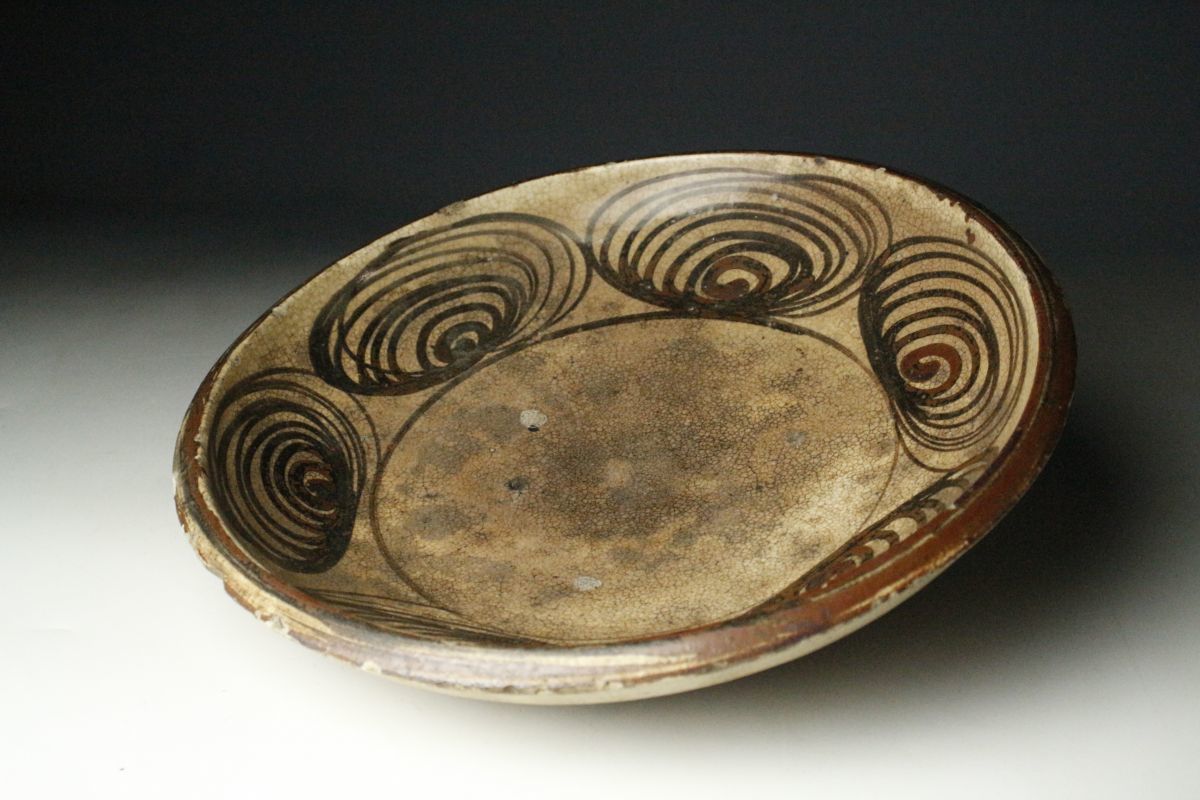Horse Eye Setoware Plate
Horse Eye Setoware Plate
Travelers during the Edo period might have ordered sake and food at a Roadside House after a long day on the Tokaido highway. The food may have arrived on a plate like this.
This plate was created in one of the large climbing kilns built along the Seto river. Potters here specialized in many kitchenwares, but the most prominent pieces were called ishizara- stone plates with a broad foot, curved walls, and a rounded rim.
Some ishizara dishes bear two color motifs, and the most well-known among these is the horse-eye design. Spiraling ovals, usually six or seven, would border the edge of the plate and frame the food. While some point to thunderclouds or clamshells, the most widely accepted interpretation is the depiction of a horse eye. Ceramists who could paint thousands of these learned to create this pattern almost unconsciously. This natural ability attracted the interest of Soetsu Yanagi, Bernard Leach, Shoji Hamada, and others. The horse eye plate became an icon of the folk craft movement and is a must have for the true collector of Mingei.
Age: Early-Mid 19th century
Dimensions: 10.5 diameter x 2 inches height
Couldn't load pickup availability









Please enter your email to learn about updates and new offerings









